One of the biggest deterrents to cycling is not being able to securely park your bike and know that it’s still going to be there when you come back. Even the fear of having your bike stolen is enough to put many people off cycling.
Whilst it is virtually impossible to prevent a determined and tooled-up bike thief, we’ll quickly go through some issues about finding a secure place to park a bike and about how to securely lock your bike.
Bike locks
Firstly, choose your bike lock! There’s a bewildering array of bike locks out there in the shops at a huge range of prices. Choosing a bike lock is probably a whole article in itself, but generally D shaped locks offer the most security.
Cable locks are relatively light and convenient to take with you when out cycling, but really aren’t very secure – they can easily be broken using a hammer, bolt cutters or even by just twisting apart. They will however deter a casual thief and may be practical for short-term parking or when you can keep an eye on your bike.
D-locks are less tamper proof, so are more secure if your bike is going to be left for any length of time. They tend to be very heavy and are much less easy to carry around. They are not unbreakable as they can still be forced open with a scaffolding pole, small hydraulic jack or angle grinder.
Adding a cable to a lock can secure other parts of a bike, but cables are susceptible to cutting with bolt cutters or an angle grinder.
So, whatever lock you choose needs to be practical and a balance between convenience and security. Even if you’re parking a relatively inexpensive bike, the hassle and inconvenience of having it stolen means that it’s worthwhile having a good lock.
Locking your bike in the street
Whilst many of these tips apply to locking your bike in the street, they will also be appropriate to locking your bike at a station or workplace – locations where bikes are likely to be left for much of the day.
Also, it’s worth remembering that while street theft gets nearly all the attention, over 50% of stolen bikes are taken from the owner’s home.
Firstly, try to choose a busy location with lots of people walking past. Even better if it’s an area well covered by CCTV. Other people and CCTV make thieves nervous, who prefer to be hidden away while they “work”.
Choose a place where lots of other bikes are already locked up. An ideal location is in the middle of a group of bikes rather than on the end. There’s a reason for this: firstly, there’s bound to be badly locked bikes that are more tempting to a thief than your well-locked bike.
Secondly, lots of bikes crammed together give a thief less room to manoeuvre and use their tools effectively.
Finally, the comings and goings of other cyclists may disturb them and if anyone is going to challenge a bike thief, it’s going to be other cyclists.
Next, lock your bike to an immovable object, such as a cycle parking stand. A bike is only as secure as the object it is locked to, so make sure you always choose a fixed, immovable object that’s not easily broken. Avoid trees, aluminium or wooden posts, signposts, scaffolding and chain link fences.
Also, something that’s often forgotten is don’t leave anything attached to your bike, such as bags, speedos, pumps etc.
How should I lock my bike?
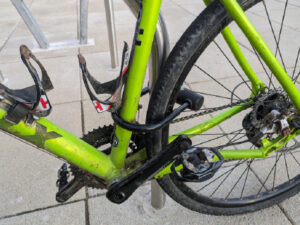
The golden rule is to always lock your bike frame to the immovable object. If you only secure your bike through a wheel, a thief will simply remove your wheel and walk off with the rest of the bike. This may sound obvious, but it happens all the time.
Try to keep the lock away from the ground, as a thief can use a hammer to smash the lock against the floor to break it. Also, the closer it is to the ground, the easier it is to use the floor for added leverage in a bolt cutter attack. So, ideally the lock should go high up around the down tube or the seat tube.
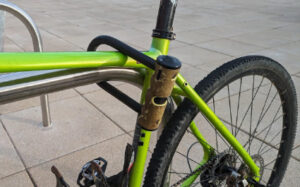
Also avoid locking around the top tube. If the lock is around the top tube of the bike, a thief can use the parking stand to try to break the lock by lifting the bike and twisting it. Also, the space left inside the lock could allow the lock to be levered open.
The next tip is to make the lock as difficult to access as possible to make an attack more difficult. If you can position it so the keyhole is facing downwards, this will make it more difficult to pick or tamper with the locking mechanism, such as filling the keyhole with superglue.
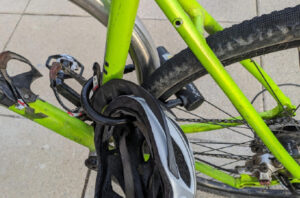
If you’re using a D-lock, try to fill as much of the space within the lock with the bike and the thing it’s attached to. This is really important as the most common way that D-locks are broken is with leverage attacks. A length of metal or scaffolding pole is inserted into the space within the D-lock and twisted until it pops open.
Locking your bike with two locks
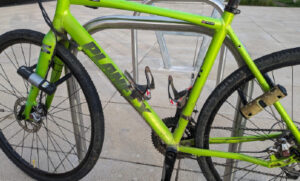
The most secure way to lock your bike is by using two locks. The first lock should go around the back wheel, the frame and the bike parking stand. The second should go around the front wheel, the frame and preferably the bike parking stand as well. This means the frame is secured in two places and both wheels are secured to the frame and the bike stand.
To be even more secure, a further option is to use two different types of lock because this requires a thief to carry two different types of lock breaking tools.
Carrying two different locks around isn’t always going to be practical. If parking in the same place on a regular basis, one option is to leave the locks attached to a parking stand. This is far more convenient than moving around heavier locks but runs the risk of a thief sabotaging or compromising a lock.
Locking your bike with one lock and a cable
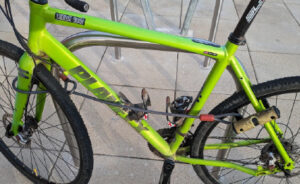
One of the most practical ways of locking a bike is to use one decent lock and a good cable. Attach a D-lock around the rear wheel, the frame and the bike stand as described above.
Next, push one end of the cable through the front wheel, bike frame and ideally the parking stand. Then pass the cable through the loop at the end of the cable and secure the other cable loop to the main lock.
The advantage of this method is that the cable is relatively light, so you’re saving a huge amount of weight over using two locks.
However, the cable is the only thing securing the front wheel and cables can be cut through quite easily. There is however the visual deterrent of the cable.
Locking your bike with one lock and a removed front wheel
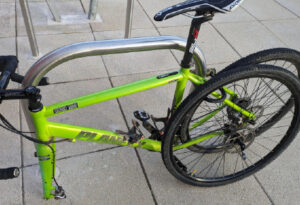
Finally, a further way of securing your bike with a single lock is by removing the front wheel.
Attach the D-lock around the rear wheel, the frame and the bike parking stand, as well as the front wheel which you’ve removed from the front forks.
This ensures that both wheels and the frame are secured with one good lock. As the D-lock is going to be full of more stuff, it is less susceptible to a leverage or bottle jack attack.
However, it’s much more time consuming to lock your bike this way and requires a larger D-lock to fit around both wheels, bike frame and parking stand.
Also, to use this method you’ll also need quick release wheels, which means you’ll have to do it everywhere you go to prevent the wheel being stolen!
Tony Carr

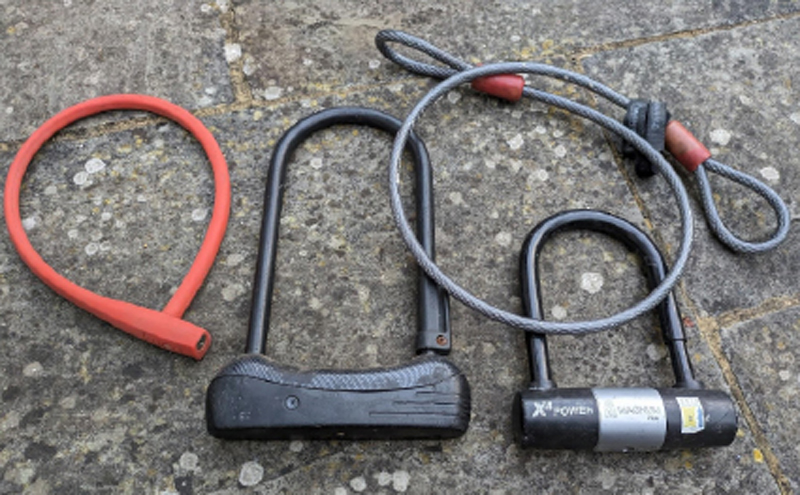
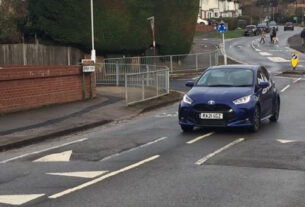
Great insights. I follow these guidelines and use a hiplock chain that you were around you hip it is very good and reflective. I also use hexlox plugs on some of my components that are also a very good idea 👍
Look for a quality mark on the lock, such as the “Sold Secure” mark, which rates locks from Bronze to Diamond.